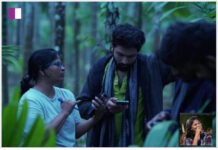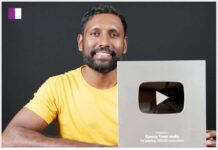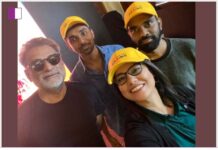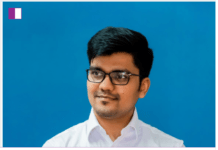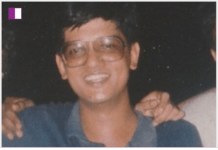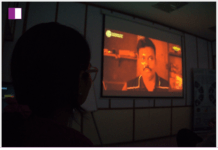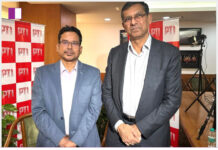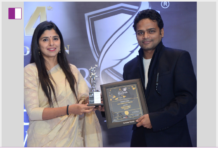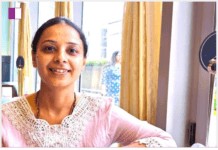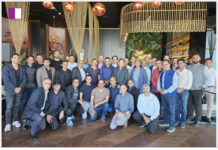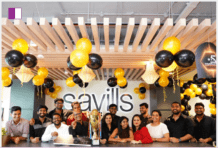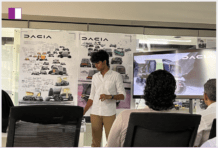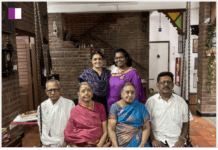As per Ashay Kshirsagar, Founder and CEO, Tonic Co, the studio known for its photorealism capabilities now aims to expand its services from CGI work and photography to setting up a digital conservatory and dabble with AR, VR and even predictive technology.
After studying art in his undergrad and doing his majors in Design and Photography, it was an obvious choice for Ashay Kshirsagar to start his career in design, but little did he know at the time that design wasn’t his calling, but photography was.
Soon he started finding design projects cumbersome owing to their lengthy nature and began exploring photography wherein the process was not only quicker but he also got a chance to work across a variety.
“Once I decided to stick to photography, I began focussing purely on it and started my career doing architecture, followed by food, people, lifestyle, fashion and so on and so forth covering pretty much the entire gamut, but in advertising, basically,” he said.
Having realised that there ought to be a better way than just shooting the products as they were because he found certain discrepancies with the products such as them lacking behind in quality, being damaged, having scratches, etc. which made post-production quite a task and then if you have large products, it was very difficult to light them up because lights only come in certain sizes and it’s not easy to control everything.
That’s when he began looking at Computer Generated Imagery or CGI to not only make the tedious process interesting and swift and get better control but also because in the virtual case, the possibilities are endless.
“In CGI, one can have the light of any size or colour and have the option to place it anywhere, which opens, quite literally, a whole new world of doing things and that’s why what we focused on was doing photorealism and making our projects look so real that no one can recognise whether it is a 3D image or an image from the photoshoot, unlike the work of any other CGI studio at the time, and that’s precisely how CGI by Tonic Co came into being in 2011,” the founder and CEO, Tonic Co, added.
He then went on to add that a little over a decade back, there was no specialisation in still CGI as it was a technology that was mostly used for VFX in movies wherein there was scope for a not-so-perfect image to get away with it. But with Stills, the case is different as it is just that one image that one would want to stare at, and in doing so, he/she may see something that makes the image just seem off and not real.
Commenting on what really got India to pick up on the CGI bandwagon, especially in ads, he stated that since CGI is used a lot in global ads and people see the merit in doing it along with the fact that the Indian market always wants to emulate what’s best that is happening in the world and find the same to do for themselves in the country, people themselves became more open to the change.
But as the saying goes the grass is always greener on the other side, there was also a lot of pushback back in the day for not doing CGI because people were more comfortable with shoots. Clients were responsible for the end product, and their reputation was at stake if anything went wrong. Therefore there was skepticism of doing CGI. However, Ksirsagar also gave them an additional offer to make things easier for them and shoot the products, in case the brand is unsatisfied with CGI and soon the word began spreading by word of mouth publicity.
“Since the kind of work we get is mostly Above The Line, comprising of main campaigns, brand campaigns or packaging, it’s always on a project basis and in that too, there are certain products or categories for which it is the photoshoots that work well, and in other it is the CGI and this choice is often influenced by time and cost,” he said.
Commenting on the nature of CGI work, Kshirsagar pointed out that since CGI traditionally takes more time as there is a 3D print of the commodity that needs to be generated first along with the background and other things, which also makes it more expensive, but the upside to all this is that once a 3D asset is generated, one gets more control and flexibility to make even the last minute changes in a very short span of time.
Also, it’s more expensive the first time around, but once the asset is built out, the second time one does it, it’s not only faster but also comparatively economical, he emphasised.
“Over the years, we have worked with clients from varied spaces such as Food and Beverages, Automotive, FMCG, Fashion and Lifestyle, Food, Alco-Bevs, etc. Earlier, we also tried to do hair, but it turned out to be quite difficult and that’s when we said, no, we should just do photography in certain cases as the end result may not be as natural as we want it. But today, since the technology has advanced, we might consider doing it again,” he pointed out.
For Tonic Co, similar to the industry at large, is that the organisation does face the challenge of finding the right talent, in their case, the 3D artists, because they are trained for doing traditional work in VFX houses or Game Studios in Real Time, and he wants to focus on photorealism, hence finding such a match isn’t easy.
The other challenge that bothers him is that of irrationally short timelines that brands and agencies approach studios with, which is almost half of what the project requires and since Tonic operates in India and London, both, at the moment, he pointed out that the scenario on a global scale is quite different.
He also shared that a part of the reason this issue exists is that Indian brands and agencies come for CGI-led work from a traditional media perspective of thinking of a concept one day and shooting it the other, but in the case of a 3D image, the case is different and much more challenging than shooting stills.
“Globally, they understand the CGI process because they have been doing it for a while now, and even in cases where they don’t, they are eager to understand and be appreciative of the time and effort that we put in going over and above what is requested and asked of us, unlike here in India where everything is assumed and expected,” he said.
Sharing the further roadmap for the company, Kshirsagar also stated that since the company has been doing good for itself and faces no challenge in what they’re doing so far, apart from the industry ones, Tonic has hit a point where the founder is thinking of ‘what next’ or ‘where do they go from here’ and amidst such thoughts, what he has figured and planned is to focus more on technological experiences such as AR, VR, Predictive Technology etc.
“Most of the AR that you would see today has been very cartoony, but what we aim to do is introduce photorealism into the space despite all technological limitations and find ways to even go beyond that. Also, I love Art which is why I keep going back to the highest quality that I can, and therefore I see a lot of potential in digital conservation. Imagine you have a statue and you digitise it to an extremely high quality and put it into a digital archive so even if it gets destroyed, you can 3D print the same with technology that does not exist right now, but could come a decade later,” he said.
Furthermore, he also mentioned that the company going forth would be more technology-heavy and focussed on doing a lot more international work while also handling clients in India as the global market poses to have much more opportunities as well.
As of now, he said that the split between the work that Tonic Co does for India and the rest of the world is that of 65-35, of which the majority is from India, and that is what he aims to change going ahead which is why he actually set up another office in London, comprising of 8 members, or what he refers to as Creative Technologists who have an understanding of both art and design.

